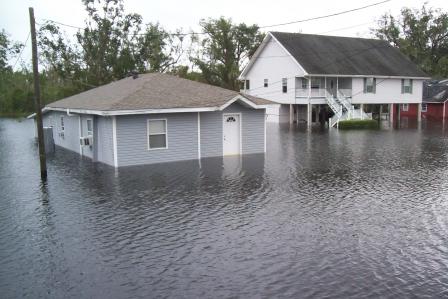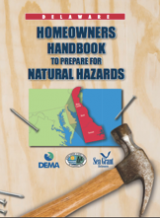Why is Coastal Community Resilience Important in the Gulf of Mexico Region?
 Benefits of Flood Mitigation during Hurricane Gustav in Jean Lafitte, LAResilience is the capacity of human and natural systems to adapt to and recover from change. Communities need to conduct vulnerability assessments and planning efforts to better position their communities to recover from coastal storms and adapt to the impacts resulting from changes in our environment. The EPA Gulf of Mexico Program (GMP) partners with Gulf coast communities to develop adaptive programs and methods for communities and ecosystems to become more resilient to coastal hazards.
Benefits of Flood Mitigation during Hurricane Gustav in Jean Lafitte, LAResilience is the capacity of human and natural systems to adapt to and recover from change. Communities need to conduct vulnerability assessments and planning efforts to better position their communities to recover from coastal storms and adapt to the impacts resulting from changes in our environment. The EPA Gulf of Mexico Program (GMP) partners with Gulf coast communities to develop adaptive programs and methods for communities and ecosystems to become more resilient to coastal hazards.Evaluation of the Coastal Community Resilience Index
To evaluate the use of the Coastal Community Resilience Index, the GMP entered into a cooperative agreement with Auburn University. The purpose of the agreement is to develop an index that shows how resilient a city or community is to natural and human disasters.
This index will use a scoring system to determine the vulnerability of a community after previous disasters, how infrastructure has redeveloped, and how that disaster has reshaped the community’s thoughts. The information collected will be shared with other communities with a goal of helping to prevent habitat protection through education.
StormSmart Coast Network
Homeowner’s Handbooks
GMP provided funding to the Gulf of Mexico Governors’ Alliance (GOMA) Resilience Team and Mississippi-Alabama Sea Grant Consortium (MASGC) to develop customized content, print and distribute copies of the Homeowner’s Handbooks in the five Gulf States (TX, LA, FL, MS, AL). These customized handbooks are developed for homeowners to help prepare for natural hazards to reduce risks to family and property. Handbooks include sections on how to prepare before the storm, mitigation measures to increase residential resilience, and insurance options available to homeowners in each state.
- The Five Gulf States Homeowner’s Handbooks. Exit
Learn more here: Climate Ready Estuaries

